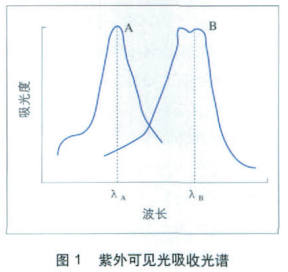Photochromic fabrics are fabrics with photochromic properties that were originally created to meet the needs of military operations in order to achieve military camouflage.
Color change mechanism
At present, photochromic fabrics have a photochromic function by attaching an organic photochromic compound to a fabric surface or a fiber by a certain treatment means. Although the mechanism is complicated, the main cause of photochromism is discoloration due to changes in molecular structure.
In view of the vast majority of organic photochromic systems, photochromism is based on single molecule reactions. We can discuss the color change process by photochromic reaction formula and UV-visible absorption spectrum.
Photochromism means that a compound A is irradiated with light having a wavelength of λ1 and undergoes a specific chemical reaction to form a product B, and its absorption spectrum changes significantly, and under the action of another light having a wavelength of λ2 or heat, Restore to the original form. That is, the substance A is converted to its isomer B by light induction to cause discoloration. Species A and B have different absorption spectra and energy level structures. Usually, light converts the energy absorbed by species A into energy B, which is normally converted to A spontaneously or under the illumination of another wavelength.
Photochromism is a reversible chemical reaction. If a substance changes color due to an irreversible reaction under the action of light, it belongs to the general photochemical category and does not belong to the category of photochromism.
The principle of photochromic reaction can be qualitatively described with reference to Figure 1. In Figure 1, λA, λB represent the maximum absorption wavelengths of Compound A and Compound B, respectively. When the compound A is irradiated with light of a wavelength of λA, the compound A undergoes a certain reaction to form the compound B, which is expressed in the ultraviolet visible spectrum, and the absorption of A gradually decreases, and the absorption of B gradually increases. This process is generally accompanied by a deepening of the color, generally referred to as the light coloring process. Conversely, when Compound B is irradiated with light of a λB wavelength, the reverse process occurs, a process generally referred to as a photochromic or photofading process.

Research progress
At present, the countries that research and develop photochromic fabrics in the world mainly include Japan, the United States, the United Kingdom, and South Korea. Among them, Japan has the most mature research and has applied for many patents. Some countries in Europe and the United States have made a lot of progress in the research of photochromic garments. As early as the early 1970s, the United States applied photochromic compounds to clothing to achieve military camouflage. The solar active line sold by Solar Active Company of the United States is white when there is no ultraviolet radiation indoors. When it is placed outdoors, the ultraviolet light activates the photochromic compound, causing the line to change to produce a specific color. When the wire leaves the ultraviolet light for about 1 to 1.5 minutes, it can return to white. Australia's TongCheng, TongLin, and others have developed photochromic fabrics that are fast-changing and washable up to 1000 times. At present, the sales in the overseas market are mainly photochromic garments produced by Japan Bell and Toray, which have achieved good market effects.
The research on photochromic textiles in China is relatively lagging behind. Tuzan Run has synthesized a spiro-type photochromic dye with good performance. The product has sensitive color, bright color, water resistance, acid and alkali resistance, and can be used for printing and finishing of various fiber fabrics. Jiang Huizhen and others used a green environmentally friendly spiral-type microcapsule color-changing dye and a low-temperature adhesive to prepare a printing paste that can be used for silk printing. Meng Jiben and other use of spiro-type photochromic compounds and Yuanming powder, Huangyuan gum, sorbitol and thickeners to make photochromic dyes, suitable for the production of a variety of fiber fabrics, wool and clothing. Donghua University produced two photochromic polypropylene fibers with good photochromic ability by blending melt spinning method. One kind of light changed from white to blue after being irradiated by sunlight, and the other fiber was irradiated by sunlight. Yellow turns green. Jiang Yingying uses a printing coating technology to treat the spiroazine photochromic compound on the fabric to make it photochromic.
At present, the research on photochromic materials at home and abroad is mainly organic photochromic materials, and the mechanism of color change remains to be further studied. The organic photochromic material has the characteristics of sensitive color change and bright color, but the fabric is easily oxidized and deteriorated, and the fatigue resistance is poor, and the price is also high. Moreover, most of the dyes have insufficient affinity for fibers, and it is difficult to process them by conventional dyeing and printing processes, which limits the application of photochromic fabrics. Overcoming these shortcomings of organic photochromic materials should be the focus of the next step. At the same time, it should be noted that although the inorganic photochromic material has a relatively slow discoloration, it is not easily affected by the environment, and the light resistance and fatigue resistance are also good. Therefore, the development of photochromic fabrics using inorganic photochromic substances is a research direction.

Furniture Handle,Hardware Furniture Handle,Knobs Handles Cheap Handle,Drawers Furniture Door Knobs
ONLEE HARDWARE CO.,LTD , https://www.onleehardware.com
